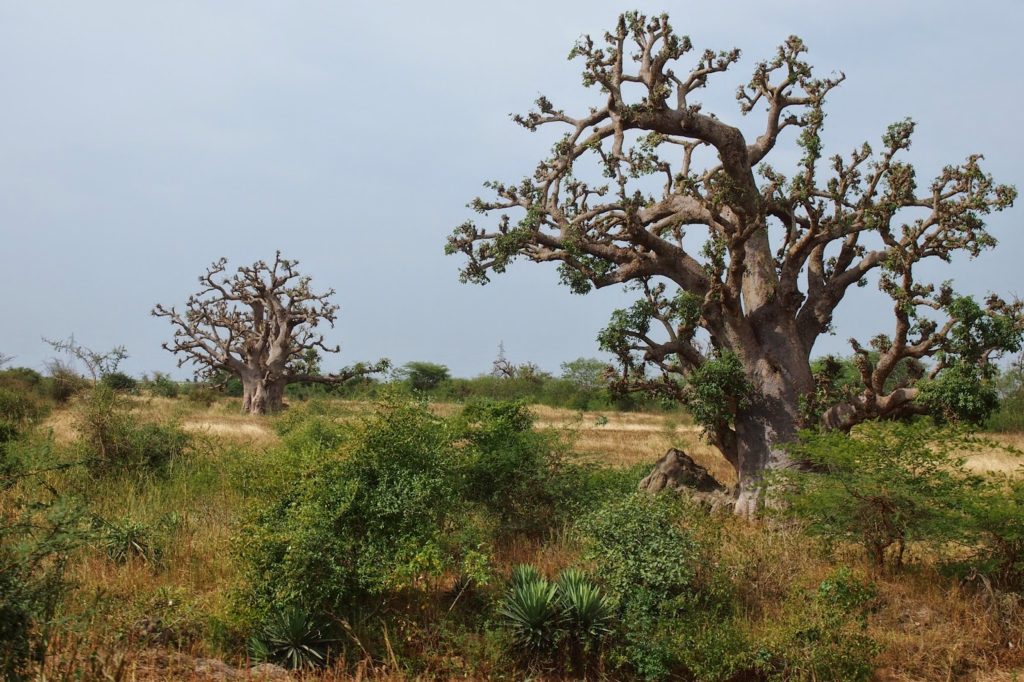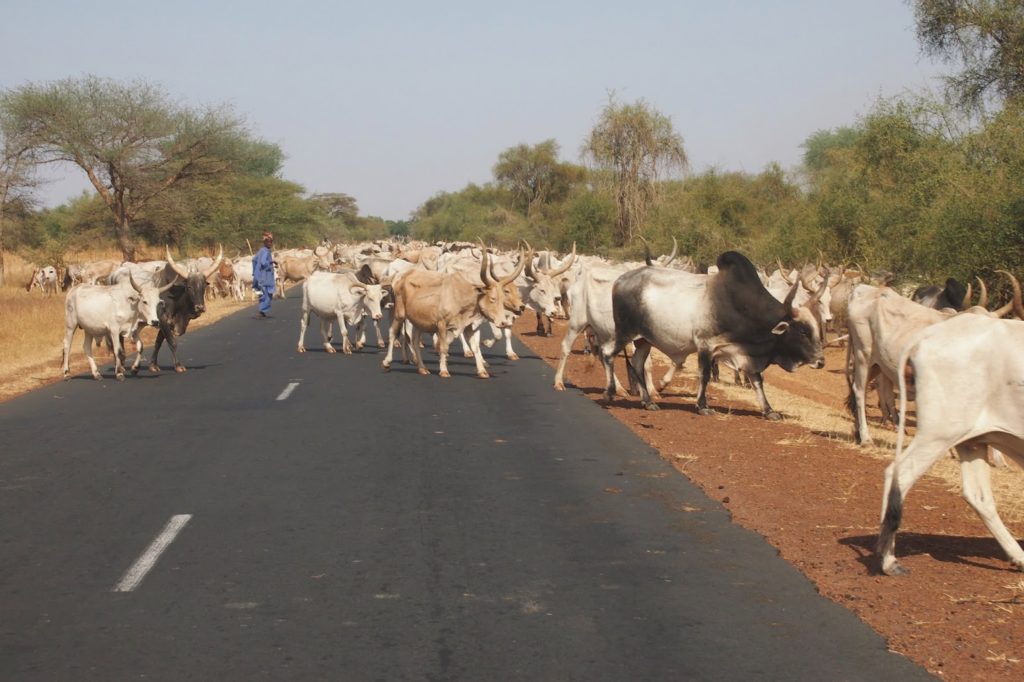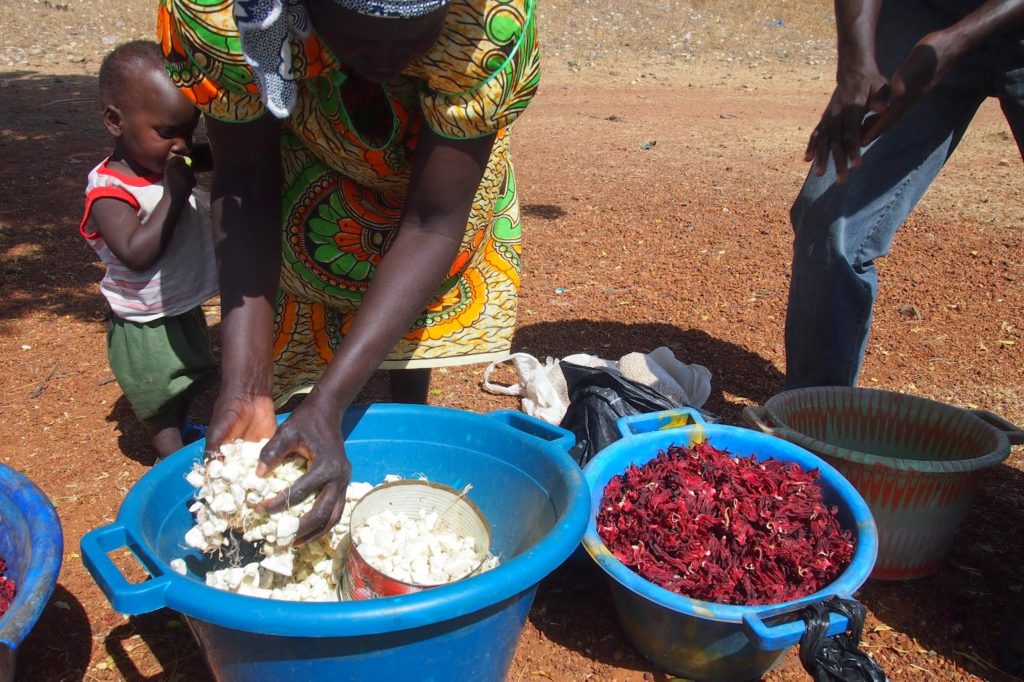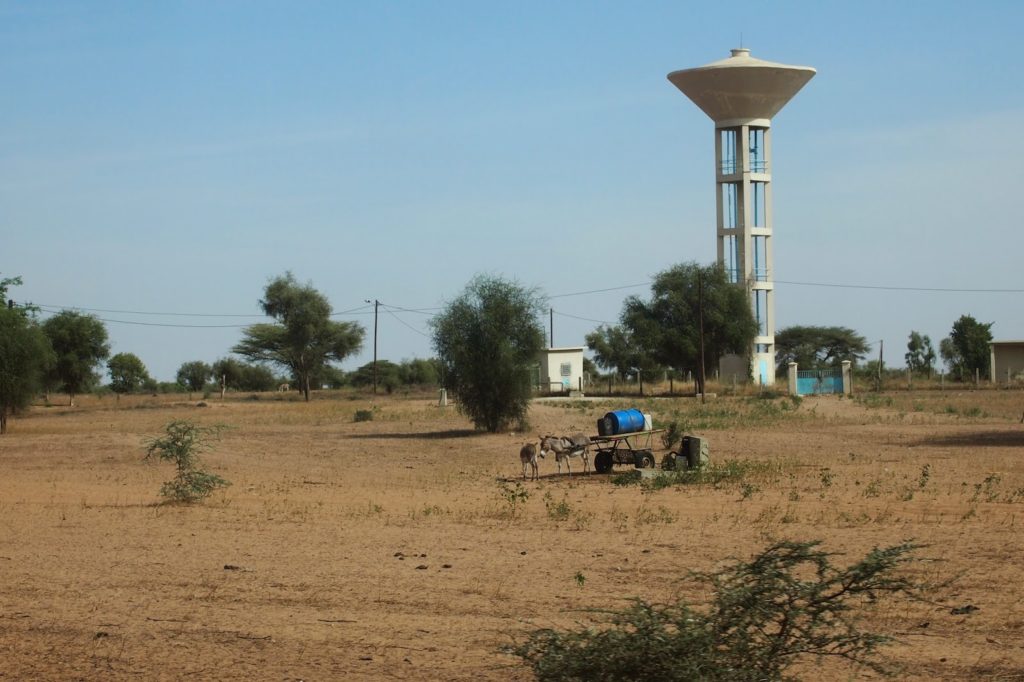
Today was the long drive to Ouro Sogui, the small commercial city on the eastern edge of Matam region. The roads were exceptionally paved for most of the length. One section had pot holes, but they were nothing compared to the lunar surface of roads in SA around the borders with Botswana and Lesotho. Leaving Dakar at 10 am on a newly built toll expressway (approaching South Africa’s N1 in engineering accomplishment, and eclipsing any road in East Africa) we made it by sunset at 7 pm. With the absence of police stops and bad roads, impediments included herds of goats and cattle, donkey drawn carts, speed bumps in the villages, and having to enter the busy streets of Touba and other cities on the way; no bypasses.
The scenery was incredible though as we transitioned from the lush, green coast to the dry browns of Matam. The roads were lined with Neem for half the trip. Baobabs and acacias were the natives frequenting the farm and pastureland. This was the season for Baobab fruit and we bought some on the road side along with sorrel, being dried on tin roofs. We saw Euphorbia living fences everywhere, and everywhere in need of maintenance. Millet and sorghum stalks littered the ground. In some places they were cut and raked into piles. Abibou informed me that what they don’t feed to livestock they will burn to keep the field clean for next season’s planting. I can only hope that the women I teach will see the value in using it for mulch or compost, any other use but ash.

Striking too was seeing death along the drive. All the grass was dead—brown. Trees were losing their leaves. A dead goat. A large dead mongoose. A man lying on the ground roadside, a hundred people gathered round, a cloth draped over his legs and torso, his hand rubbing his face. Abibou was aghast that the man had probably been hit by a truck—nowhere in sight—and was about to pass. Just that morning leaving Dakar we’d seen a man on motorbike lose control over a speed bump, fall into the SUV on his left, knock his head back on its door, and then be drug a meter under the bike. He got up right away seeming fine, his bike’s windshield in pieces and the body all dented up, but he must have gotten a concussion. The SUV driver stopped and went to assist, along with others from the sidewalk. We drove around, drove on. The last of the watering holes that dot the roadway all day are slowly drying up until the rains return next July.

Beacons of hope in the drying land were numerous water towers, like flying saucers, hovering over thatch roofed huts and crumbling concrete buildings. Through the dry season these towers will provide for tap water and gardening, but it is not free. One gardening group training this week said they can’t afford to garden because the price is too high. Their garden remains brown and unplanted, goats marginally grazing on the dead grasses next to piles of unused drip-line irrigation. The ground water is reliable and plentiful though, and hand-drawn wells are a common sight. At least there will be water to cook and clean with at home, enough to drink and make tea.

Abibou pointed out off hand that the acacias we were passing had a joke. Farmers said that the trees didn’t like them because they wouldn’t give them shade in the hot and humid rainy season, dropping their leaves when all other trees have just put theirs out. There is only one tree like that in the savanna: Faiderbia albida. He hadn’t known the scientific name and was pleased to have found its identity. He had just been talking about agroforestry potential, and I told him how this was exactly the place to be doing it with their own indigenous trees. He was amazed that the joke could actually be a good thing for crops, and therefore for the farmer.